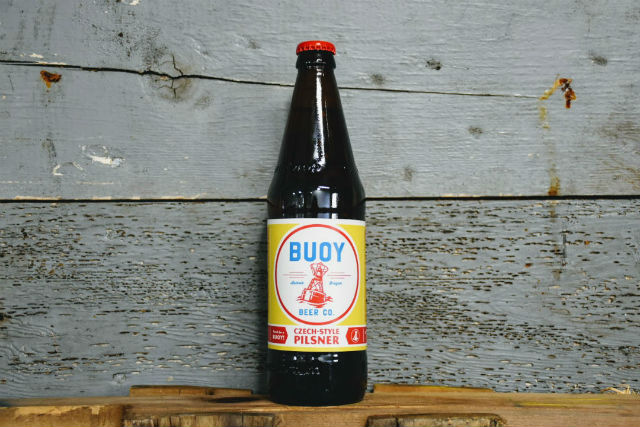
David Kroening of Buoy Beer always liked the idea of returning the craft beer industry to a refillable glass bottle option and said he has been impressed by brewers, like Double Mountain, that have taken the challenge on themselves before a statewide system was in place.
Starting in a few weeks, a group of Oregon breweries will follow suit with Double Mountain, with the United State’s first statewide refillable beer bottle program, called the Oregon Beverage Recycling Cooperative.
“The first few years we utilized a mobile bottling service and as we started moving forward on getting our own line, the OBRC began reaching out about the program,” Kroening explained. “As we began searching for the bottle we wanted to use, our team agreed that even though there were a bunch of more attractive bottles to showcase our beers, if using a refillable bottle was an option — it’d be a no brainer.”
Double Mountain started do this in 2012 and Matt Swihart, the owner and brewmaster for the Hood River, Oregon brewery said they were the first on the West Coast to bring the idea of refillable glass bottles back into the marketplace.
“I’ve been brewing for over 25 years and I grew up in an area of the country that still used refillable bottles when I was in college,” Swihart said. “My friends and I drank copious amounts of beer from the Huber Brewing Company in Wisconsin. Like many Midwestern breweries, they were still packaging beer in reusable bottles at that time.”
Most refillable glass in the United States started transitioning to one-way glass (throw-away or recycled) in the 1970s.
Swihart added that prior to Double Mountain’s introduction of refillable glass in the Northwest, only two breweries in the U.S. still packaged beer as such, Straub in Pennsylvania, and Bayern Brewing in Montana.
“Refillable glass is the most environmentally responsible and the highest quality package going,” he said, adding that refillable bottles can be cleaned and reused 20-30 times before replacement.
Kroening said after talking to the OBRC and understanding their plans both initially and long term, the entire program made way too much sense not to pursue.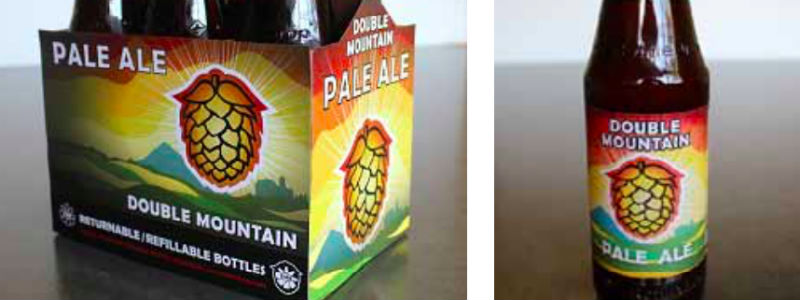
“Being able to reduce our waste by switching to a package that has up to a 99 percent better carbon and energy footprint than new glass bottles is really exciting,” he said. “There are still many times when drinking beer from a bottle isn’t a good option, so we’ll continue with our canned six packs, but we’re hopeful that a refillable option will excite people to seek them out, especially in our core market of Portland. As the OBRC says, ‘they are the most sustainable beverage package in existence.’ ”
As a brewery with a sustainable mindset, Double Mountain knows that packaging is where they can most reduce their carbon footprint to the environment.
“Although we have a giant 25,000 square ft. solar panel array to offset our electrical usage, the single largest impact we can make as a brewery and community member is to minimize our carbon use during packaging,” Swihart said, “that means using the best least obtrusive container, that container is a refillable bottle.”
Double Mountain started cleaning their own bottles in 2012 and in late 2017, the OBRC started the effort to take the program statewide.
“We were excited to be the pioneer in this effort as the first brewery to work with the new program and bring refillables back to the Northwest and back to our consumers as the most preferred, highest quality, softest environmental package available — but drinking draft beer at the pub is still better,” Swihart said.
Both brewers feel that Oregon breweries are extremely well poised to take advantage of the new program. Oregon breweries can buy the glass locally, and the local recycling infrastructure network of the OBRC will collect and separate the used glass, clean them in Portland and then sell the glass back to the brewery ready to be filled.
“Other states won’t immediately have the same opportunity as we will have in Oregon, but Double Mountain and the OBRC would like to set a new standard and model that other states could emulate,” Swihart said. After proving the concept in Oregon, Double Mountain has plans to set up collect sites in the Seattle area to bring that glass back to Oregon and expand their efforts.
“Most every nation on the planet is proving refillable containers work and has worked for decades,” Sihart said. “The U.S. has been the sole outlier in thumbing our nose at the environment.”
On the logistics side, the OBRC has made it pretty seamless to get things going for Buoy.
“Our bottling line is fitted to that specific bottle and we are working out new UPCs as that is the method that OBRC will use to separate out the refillables from other bottles; but outside those aspects, we’re able to get the bottles the same way we would otherwise, with no big logistical changes,” Kroening said.
He noted that they have consumers reach out all the time with questions on sustainability and packaging components.
“I think these will be a great option for those who are already fans of our beer and are also passionate about environmental initiatives,” Kroening said. “The OBRC has made a significant investment to get the program off the ground and make it work for us a supplier, the glass production/distribution companies, and also our retailers. It takes a lot of players to come together and all of us need to be somewhat flexible with our normal processes to make a new game changing idea really take off.
“And that’s what we have going on here. They are more expensive to start, but as usage increases we expect costs to come down. There’s some relatively conservative estimates being used for how many times the bottles can be refilled, and even then, the numbers work out. If we get to what other countries like Canada and Germany see, the numbers really make a lot of sense.”
Swihart said since 2012, Double Mountain has cut costs by more than 50 percent when they fill beer in a refillable versus a new container.
“The savings are immediate,” he said. They originally set up packaging equipment to use a refillable 500 ml bottle in 2012. For the new six packs of 12 ounce bottles, they had to purchase some change parts for their filler and labeler. Swihart said the cost of those changed parts was a total of $4,000 for a 12-head filler.
“We recouped those costs within three months of packaging our beer and get to bring the first refillable six pack to market on the West Coast in over 30 years,” Swihart noted. “We are more than excited about the refillable bottles and overwhelmed to have access to the infrastructure of a statewide system to work with and make the logistics so easy in our state. Oregon breweries will be the leaders in environmental stewardship and provide a model for the rest of the country to emulate.”

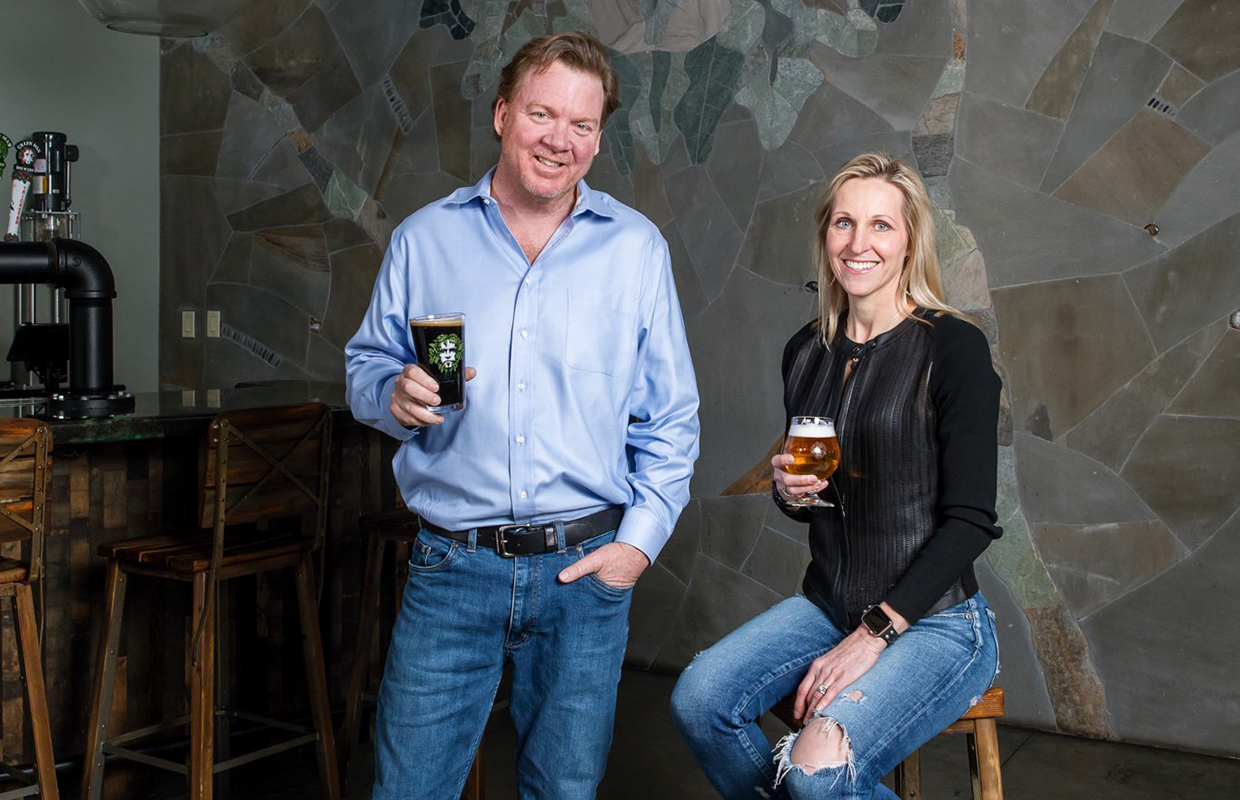
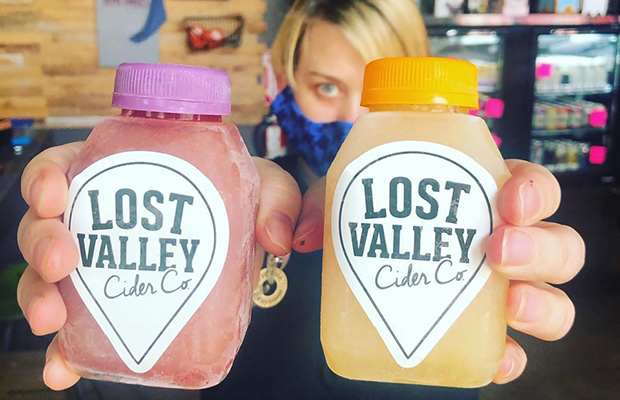
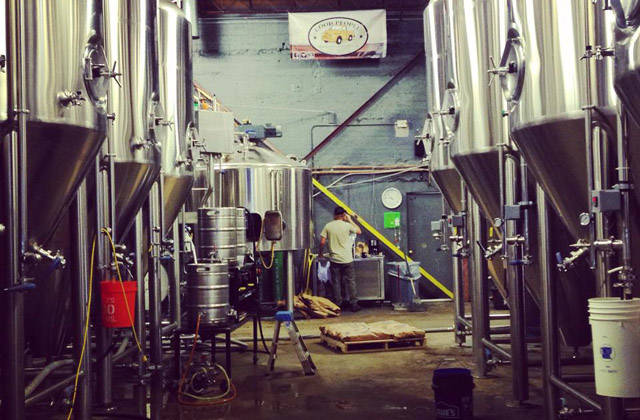
3 Trackbacks / Pingbacks